1. 1. Review your current situation
1.1. Establish the objective of your BCP
1.1.1. What do you want to achieve by establishing your BCP?
1.2. What is your history and current goals?
1.3. External
1.3.1. PESTLE
1.3.2. Scenario
1.4. Identify your key products or services
1.4.1. What are your most important products or services? Consider the following criteria: Share of income they generate; Amount of clients demanding them; and Cost of non-delivery: negative financial, productivity and reputational consequences.
1.5. SWOT
1.6. Redo your cash flow for next 6 months
1.6.1. Subtopic 1
1.7. Evaluate the potential impact of disruptions to your enterprise and workers
1.7.1. Hw long can interruptions last before becoming unacceptable? What are the resources required and
1.7.2. the suppliers, partners and contractors needed to conduct key operations?
2. 2. Business Model
2.1. Describe your current Business Model (Business as Usual)
2.2. Alternative Business Models
2.2.1. Incremental to current
2.2.2. New business model with similar market
2.2.3. New product and market
2.2.4. Walk Away
3. 4. Implementation
3.1. Communication
3.1.1. Establish contact lists
3.1.1.1. More of your activity will be non-physical (WhatsApp calls, zoom meetings etc). Make sure you have accurate and update lists of all your key stakeholders.
3.2. Redo cash flow analysis
3.3. Review People, Process, Profits, Partners and modify if necessary
3.4. Address Funding options if necessary
3.5. Undertake different scenarios
4. Case Study 1: Kenya sardine business
4.1. History
4.1.1. Joyce Mkumura is the owner of company producing canned sardines in Mombasa on the Kenyan coast. She sells her products directly throughout Kenya and to larger firms who export. Joyce relies on consistent orders from three companies for about 80 per cent of her business. These companies due to their connections to the export market, send regular orders. As COVID-19 cases spread in Kenya, Joyce developed a BCP to protect her business. She has a total of 30 workers.1 Joyce completed the COVID-19 Risk Assessment test and realized her risk profile was high. She dealt with multiple suppliers on a daily basis. Her workers worked in close proximity. She was reliant on the port staying open for much of her sales. The rest of her sales mostly went to other Kenyan cities and she needed reliable transport links. Joyce realized she needed a BCP.
4.2. Step 1: Joyce identified her key products
4.2.1. For Joyce her main products are different types of canned sardines. Sales of these products are the sole means of revenue generated. Her client base is relatively small. She has three main customers who constitute 80 per cent of sales. The cost of non-delivery to these customers would have a very negative consequences on her business.
4.3. Step 2: Joyce established the objective of her BCP
4.3.1. The goal was to develop simple internal processes for her business that would provide key protections for the “4Ps”: people, processes, profits and partnerships.
4.3.2. People - Maximize the physical and emotional safety of herself and her workers;
4.3.3. Processes - Resume operations as quickly as possible following disruptions;
4.3.4. Profits - Safeguard her supply chain; and make sure that her key products are resilient to disruptions associated with COVID-19;
4.3.5. Partnerships - Ensure that her enterprise fulfils its contractual commitments with clients.
